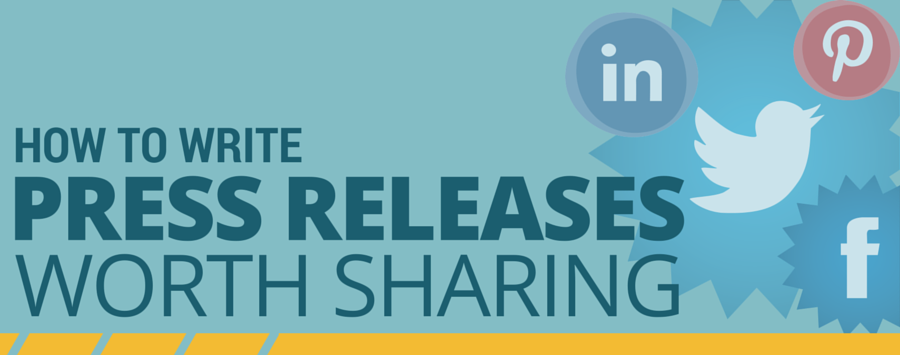
Public relations professionals spend hours getting a press release written, edited and approved – and then re-written, re-edited and re-approved.
After toiling over the perfect adjectives to inspire brand confidence and the perfect verbs to encourage action, we proudly stare at our finished work feeling great achievement, along with relief that it’s finally done.
Unfortunately, unless we did some planning beyond those verbs and adjectives, few people will read our well-crafted press releases.
Don’t get me wrong, those who read them will be sold. Communications professionals are usually good writers – it’s a job requirement. People who read our dispatches will truly be inspired by our words; they just may not be inspired enough to share them.
Your press release can’t reach its full engagement potential unless you’re proactive in making it shareable, and that must start during the writing process.
Here are three things to address up front that will make your press release worth sharing.
Write for your audience
This may sound simple enough, but given all the internal stakeholders usually involved in a press release, it’s easy to end up writing for the wrong audience.
Be careful that in satisfying the requirements and desires of your product managers and executives, you don’t end up writing content that satisfies internal audiences at the expense of those who should be your focus.
The greatest gift social media has given us is the opportunity to get to know our audiences.
Start by researching who your audience is and where they hang out online, and then continue with both traditional and social media monitoring to keep your finger on your audience’s pulse.
You want to be relevant. Knowledge of what they are talking about and what they are interested in will help you fit your story into conversations that are already happening.
Write with social in mind
When crafting press releases or any other content we hope will be shared, we need to keep in mind just what people will share and where they might share it.
The call to action in your press release may be to visit your product website, but your secondary aim should be to get people to share your message.
In our increasingly digital world, the most likely place your press release will be shared is social media. But social networks have rules and limitations you have to plan for. A good starting point is to make sure you consider Twitter in your writing.
Your shareable press release should have a stand-alone sentence or two that beg to be tweeted.
You have to make sharing easy for your readers by giving them text that’s not only easy to share and fits the character limits of social channels, but also gets your message across. Note the sentence right before this paragraph: “Your shareable press release should have a stand-alone sentence or two that beg to be tweeted.”
I hope you noticed how easy it would be to tweet that. It was quite intentional: I want you to tweet it with a link to this post.
If you don’t help the reader determine what to share, they will do it themselves or not at all, and it may not come across as you would have wanted.
Write stories not copy
When you launch a product or event, a lot of copy gets written — marketing copy, sales copy, collateral copy, email copy and so on.
However, you need to resist the temptation to use that type of copy in your press releases. Don’t even think of them in the same light.
Your press release writing should align more to your blog or an article that appears in an industry publication, than the reference material in your product guide.
I know what you’re thinking: it’s sometimes really hard to think of stories for the things you are announcing. But remember that if you can’t think of a story, then no one else is going to.
If you are targeting journalists, they’re not going to find the story for you, and if you’re targeting clients, consumers, or industry influencers, they are not apt to read your news unless you give them a reason.
Perhaps the safety bolts you’re writing a press release about don’t lend themselves to storytelling, but the fact that they can save lives because they will never rust or break does. Find your story and tell it. People want to share stories, not copy.
For more tips on writing shareable press releases, read my paper Tips for Creating a Press Release that Maximizes Social Sharing. And if you have anything to add or any other observations, leave me a note below in the comments section. I would love to hear from you.
This article was syndicated from Business 2 Community: 3 Writes Don’t Make a Wrong When Crafting Shareable Press Releases
More Sales & Marketing articles from Business 2 Community:




